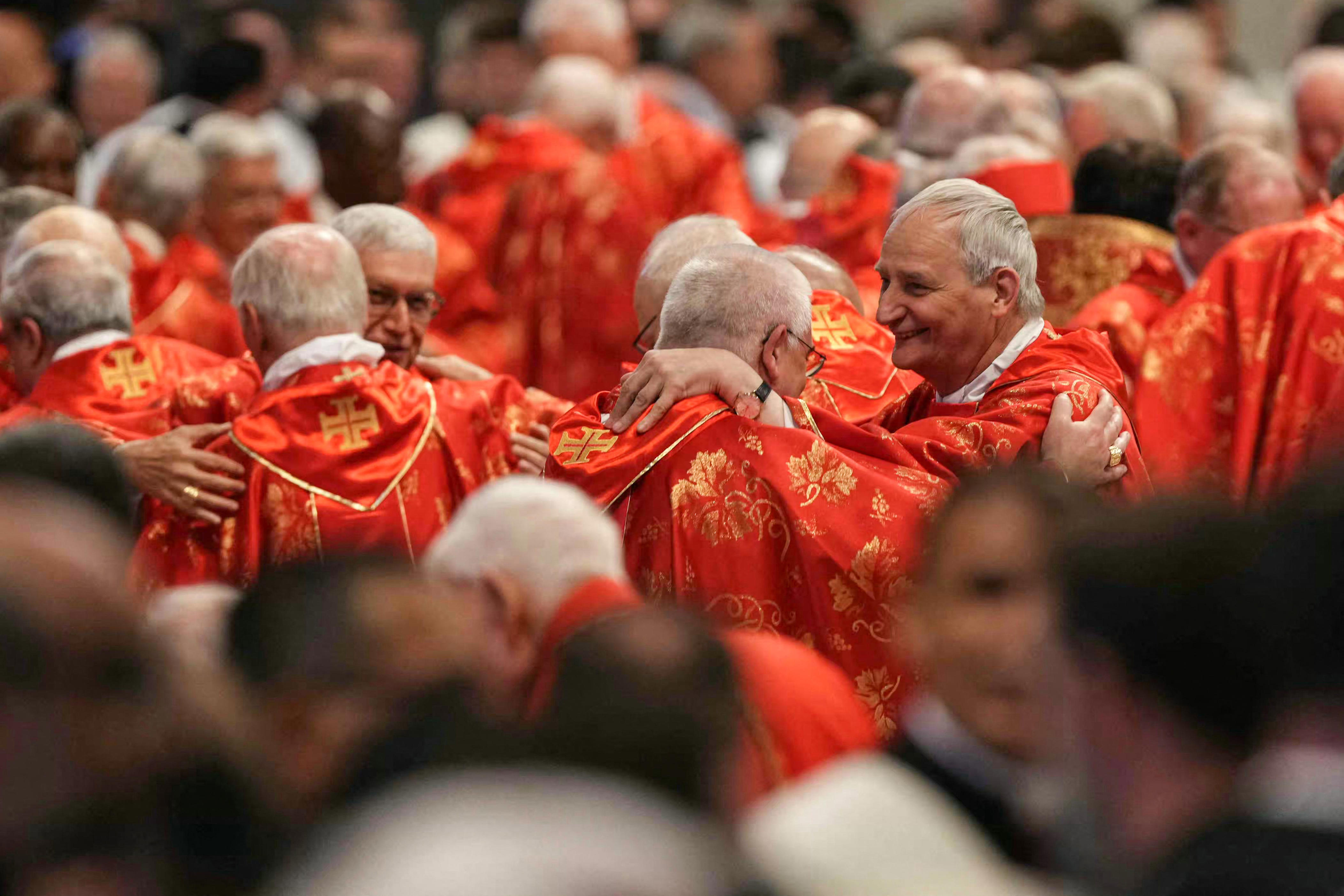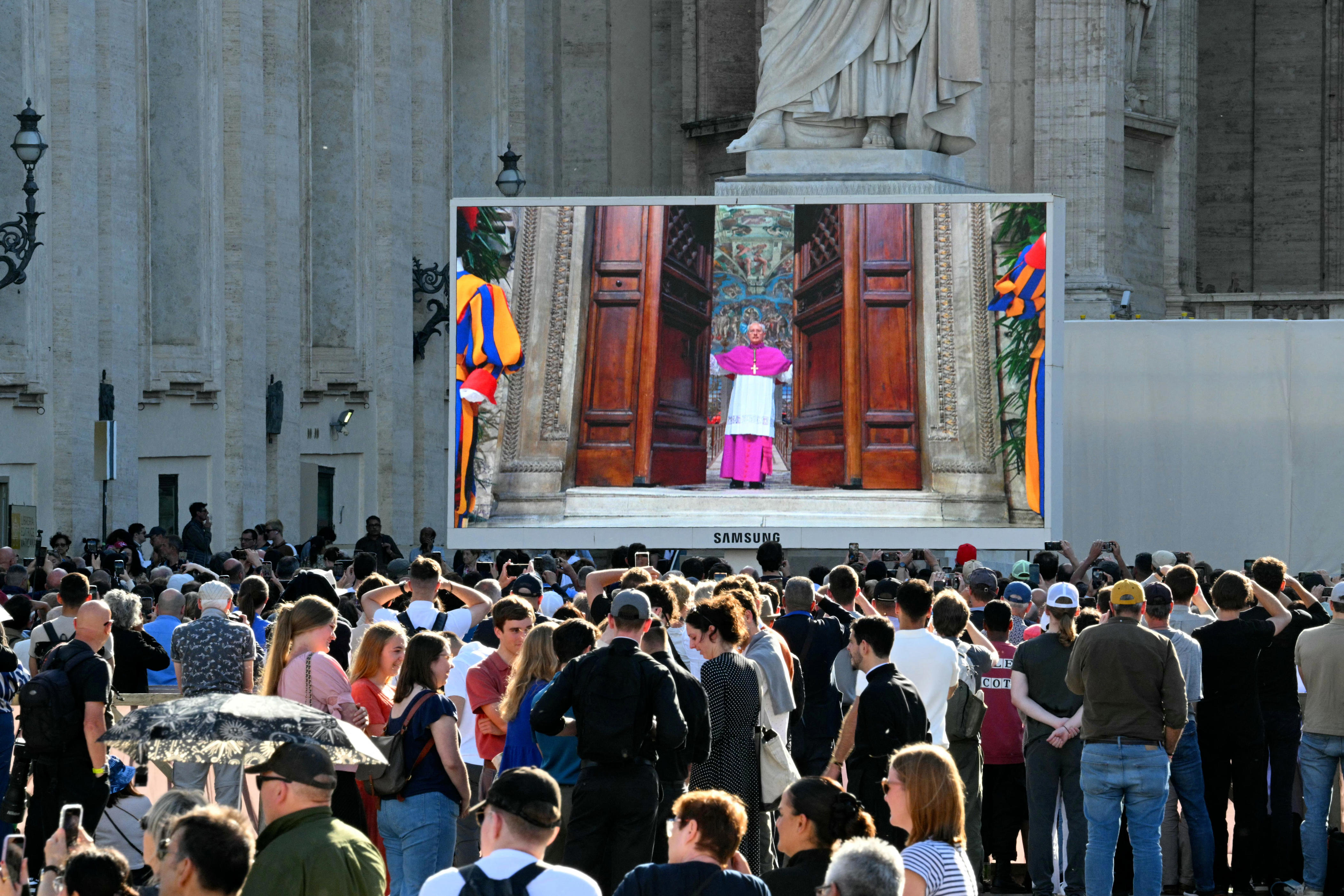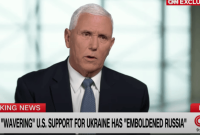Black smoke plumed over the Vatican into the night sky in Rome on May 7, signaling the papal conclave did not reach consensus on a successor to
Pope Francis
− and the cardinals will reconvene at the Sistine Chapel on May 8.
Tens of thousands had packed St. Peter’s Square as darkness fell, all eyes watching for smoke from the iconic chapel’s chimney. They had to wait longer than usual − more than three hours after the start of the conclave − for the signal to appear.
∎ Earlier on May 7, a solemn procession of 133 elector cardinals from across the globe moved slowly into the chapel, chanting the “Litany of the Saints.” The cardinals each recited an oath pledging to follow the rules of the conclave.
Start the day smarter. Get all the news you need in your inbox each morning.
When the doors were finally shut, the cardinals entered seclusion.
for the first round
of voting.
∎ The covert procedure is
anticipated to last several days
This will lead to new guidance for the planet’s 1.4 billion Roman Catholics.
With no clear favorite for election, first smoke figured to be black
On Wednesday evening, the initial smoke signal signaling whether a new Pope had been selected rose into the Italian skies, and unsurprisingly, it was black, signifying that no decision had yet been made.
It was improbable for a swift conclusion in a meeting where no obvious frontrunner emerged to take charge.
Pope Francis
And varying opinions on whether the church should adhere to the progressive course he established or adopt a more conservative trajectory.
Despite his low profile at the time, it took less than two days for then-Cardinal Jorge Bergoglio of Argentina to earn the two-thirds majority of votes required, as he became the first Latin American pontiff in 2013. Now the world will await, however long it takes to greet the white smoke that will signal a new pope has been elected.
Cardinal Dolan from New York anticipates the conclave will take between 3 to 4 days.
The day prior to when the electors were secluded for the conclave, an American cardinal provided insight into the confidential procedure of selecting a new pontiff, mentioning that this time around it might last between three to four days partly due to the large number of deserving nominees.
New York Archbishop Timothy Dolan, one of 10 U.S. cardinals participating in the vote, told SiriusXM’s Catholic Channel on Tuesday that participants consult with each other to learn more about contenders they might not know well.
“We’re not horse trading here,’’ Dolan said. “We’re saying, ‘Tell me about this guy. You’re from Latin America. Go through the list of bishops. Tell me some of these fellas. Am I right to be enchanted by this guy?’”
Dolan related a conversation he had with his friend Giuseppe Betori, an Italian cardinal who served as archbishop of Florence from 2008-2024. Dolan said it was helpful to learn from Betori about Italian cardinals and bishops, and in turn he shared his thoughts about American candidates.
With 108 of the 133 cardinals joining the voting ranks during Francis’ 12-year tenure, and at least 25 of them coming from countries that have never voted before, those exchanges may be more valuable than ever in what’s regarded as a wide-open contest.
“People say, ‘Oh, do you have a problem choosing a candidate?’’’ Dolan said. “I’m saying, ‘Yeah, not because there’s not enough of them, but because there’s quite a few of them.’’
Advanced techniques safeguard confidentiality for an age-old ceremony.
Electors have been prohibited from interacting with people outside during conclaves since the Middle Ages. To align with modern practices, the Vatican has implemented advanced techniques to maintain confidentiality, such as employing signal-jamming equipment.
Cardinal Giovanni Battista Re, who leads the College of Cardinals, conducted the morning mass for the beginning of the papal election process at St. Peter’s Basilica. During his address, he emphasized the importance of unity through faith and prayer, noting that the incoming Pope will confront a challenging, intricate, and tumultuous period in history.
Cardinal Robert McElroy, Archbishop of Washington, D.C., described the conclave process as “deeply profound and enigmatic.” He stated regarding potential frontrunners to replace Pope Francis: “I have no inside information about who might be leading.”
Over 200 out of the 266 popes originated from Italy. However, it has now been 47 years since an Italian last held the position of pope. Pope Francis became the first pope from Latin America, and so far, none have come from the United States.
Many cardinal candidates from Italy and various countries are seen as frontrunners
.
At what point will the selection of the new pope occur?
It has been centuries since a candidate emerged with the two-thirds majority required to become pope on the first ballot. The cardinals can vote only once on May 7, then
likely will need to reconvene on May 8
. A Mass will be celebrated in the Pauline Chapel before they return to the Sistine Chapel for midmorning prayer and that day’s rounds of voting. Up to four rounds of voting are permitted each day.
After voting on May 8, there will be an evening prayer before they return to their lodging at Casa Santa Marta. If the votes failed to result in someone receiving a two-thirds majority, they will return for more voting on May 9 − and as many days as required to elect a pontiff.
After a cardinal receives the required number of votes and agrees to take on the monumental task, white smoke will signal his selection.
Front-runners for pope: Who is favored to be the next pope?
Some of the cardinals frequently mentioned as candidates to succeed Francis include non-Italians Luis Antonio Tagle, 67, of the Philippines, a liberal sometimes referred to as “Francis 2,” and Peter Erdo, 72, of Hungary, who is considered a favorite among the more conservative cardinals.
Myra Beye, a devoted follower of Tagle, resides in Rome after being born in the Philippines. “This is why I’m attending this event—to back him up,” explained Beye, aged 25, as quoted by the Associated Press at St. Peter’s Square. She added, “Even so, I’ll pray for whichever candidate gets selected.”
So far, out of 266 popes, 217 originated from Italy. This country also presents formidable candidates currently, such as Pietro Parolin, aged 70, the influential Vatican Secretary of State known for his moderation, and Matteo Zuppi, 69, who maintains a close relationship with Pope Francis.
What is typically the duration of a conclave?
The initial vote will occur on May 7, followed by as many as four additional votes every day after until a decision is reached. Although there isn’t an established duration for this process, most recent conclaves have concluded within just a handful of days. Over the last nearly two centuries, since 1846, electing new popes has typically required between two to five days, covering the selection of the previous twelve pontiffs.
The Rev. Patrick Flanagan, associate professor of theology and religious studies at St. John’s University in New York, says Gregory X made it clear that conclaves should be focused and expeditious.
“According to the original prescription, if a pope had not been elected after three days, a cardinal was restricted to one dish at their meals,” Flanagan said. “After eight days, only bread, wine and water!”
What was the longest conclave in history?
After
Pope Clement IV
died in November 1268, cardinals met in
Viterbo, Italy
, about 68 miles from Rome, to vote on a successor. The papacy was vacant for almost three years as disagreements dragged on. Frustrated citizens of Viterbo finally locked the cardinals in the
Episcopal Palace
and “even
removed the roof
to expose them to the elements, hoping to expedite the decision-making process,” according to ucatholic.com.
The eventual winner, Gregory X, tightened up conclave rules. The longest conclave in modern times, in 1903, ended when Pope Pius X was chosen
after five days
.
Most common pope names: John, Gregory, Benedict and Pius
The first thing the new pope will do is choose a name. In the history of the papacy, the most commonly used name has been John, first chosen in 523 by Saint John I,
the Vatican says
The most recent pope to select that name was Italian Angelo Giuseppe Roncalli, who became Pope John XXIII when he was elected in 1958. In 2014, Pope Francis canonized Roncalli as a saint.
Other common names include Gregory, honoring Pope Gregory I, widely recognized as Saint Gregory the Great (590-604), with the last one being Gregory XVI in 1831. Meanwhile, Benedict has been selected 16 times, including by Francis’ predecessor, German-born Joseph Ratzinger, also known as Benedict XVI, who chose this name in 2005.
Among the favored papal names are Clement, Innocent, Leo, and Pius. Out of eleven pontiffs between 1775 and 1958, seven held the name Pius, spanning from Pius VI (who served from 1775 to 1799) through Pius XII (whose reign was from 1939 to 1958).
Swiss Guard, papal heroes of the 16th century
The Swiss Guard,
the pope’s iconic bodyguards
, are protecting the Sistine Chapel
as cardinals assemble to elect a new pope.
They look ceremonial in their Renaissance-style uniforms that serve as homage to the epic last stand the guards once made to defend a pope. It’s a declaration they are willing to do so again, according to Bry Jensen, a historian and host of a podcast about the papacy.
In 1527, renegade soldiers from the Holy Roman Empire were indignant over not being paid and attacked Rome. The attack came amid burgeoning anti-church sentiment in Europe.
“147 of the 189 Swiss Guards including their commander died to give Pope Clement VII time enough to escape,” Jensen, host of the
Pontifacts show
, told USA TODAY.
Read more here
.

How does the voting take place?
Here are the
specifics of the voting process
, according to the Vatican:
Each cardinal writes the name of his chosen candidate on a ballot, folds it, holds it aloft and carries it to the altar in order of rank. The cardinal places the ballot on a plate covering a chalice and says, in Italian:
“
I call as my witness Christ the Lord, who will be my judge, that my vote is given to the one whom I believe should be elected according to God.”
The cardinal then uses the plate to drop the vote into the chalice, bows to the altar and returns to his seat. Cardinals who are unable to walk give their folded ballot to a “scrutineer,” who follows the same procedure without reciting the oath again.
Any cardinals who are too ill to be in the chapel are given ballots and a sealed box with a slit where the folded ballots can be inserted. Once the votes are cast, the “infirmarii” bring the box back to the chapel, where it is opened in front of the electors. The votes are counted and added to those already in the main chalice.

What is the process for counting papal election ballots?
Once every vote has been submitted, one of the three ballot counters stirs the chalice to shuffle the papers inside. A different counter then tallies these ballots, moving them into another receptacle. Should the quantity of collected votes not align with the total number of participants, all ballots will be incinerated, prompting an immediate repeat election. However, should the tally prove accurate, each ballot is unfolded and declared aloud.
The scrutinizers take their seats at a table positioned in front of the altar. The initial member reads out the name inscribed on a voting slip and then conveys it to the next person, who verifies the name and forwards it to the final individual. This last person announces the name loudly so all can listen and documents the casted vote.
After all the ballots have been examined and the votes counted, the last scrutineer punctures each card with a needle and strings them together using twine. Both ends of the thread are securely knotted, then these documents are kept safely away. Once more, the tally is reviewed and confirmed. Before the participants depart from the Sistine Chapel, every single ballot gets incinerated inside an iron furnace.
The article initially appeared on USA TODAY:
On the initial day of the papal conclave, when dark smoke appeared, indicating no pope was selected: May 7 summary






